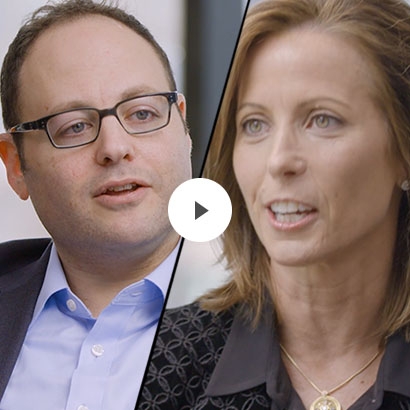Companies are prioritizing resilience in the wake of the pandemic, and that’s driving demand for end-to-end automation. Discover what’s next for enterprise software and who will benefit from this emerging $40 billion industry.
大流行了伴随矩阵的一些残酷的事实ies large and small. Many simply weren’t prepared for a world in which remote work, sudden shifts in demand, supply disruptions and labor shortages seemed the norm.
The result has been a new emphasis on operational resiliency, with companies tapping software and apps to automate processes from accounts payable to resource planning to data collection. But the next phase of readiness promises to be far more comprehensive—and it’s spurring a new era in automation software.
"To make the transition, a once siloed collection of technologies is coming together with a new category of infrastructure software to create end-to-end enterprise automation platforms," says Keith Weiss, Morgan Stanley's U.S. Head of Software Research.
This emerging "automation stack" lets companies apply automation more uniformly across their organizations. Weiss and his colleagues think it’s poised to grow 20% annually and represent a $40 billion market opportunity by 2025—making it one of the largest and fastest growing markets in infrastructure software.
Enterprise automation market is expected to grow 20% a year.
Enterprise Automation Keeps Evolving
Enterprise automation may be a hot topic right now, but it's been around for decades, from the Enterprise Resource Planning software of the 1990s, which addressed back-office processes, to the scores of apps in the mid-2000s that automated individual workflows and tasks.
今天,“low-code”lutions, such as Robotic Process Automation (RPA), have rapidly accelerated the use of digital tools in critical business processes. Consider a bot that can validate timesheets, track inventory or even handle customer questions.
"Most companies with automation are working on tactical or department-level projects involving RPA, low-code application development, and low-code workflow automation projects," says Sanjit Singh, who covers small and midcap infrastructure software.
Now, the push for organizational resilience and real-time decision-making is further advancing automation initiatives. The next step: standardizing automation and moving toward enterprise-wide projects.
Enter the ‘Automation Stack’
Currently, no one vendor provides a best-in-class automation tool that serves every customer's needs. Instead, the enterprise automation industry consists of primarily standalone solutions, including:
- Low-code application and workflow automation platforms,
- Robotic process automation solutions,
- Process and task mining tools, and
- API-based integration platforms that bring multiple tools together.
But wrangling an ever-growing portfolio of automation applications and services is challenging. Customers are increasingly interested in finding efficiencies between applications and saving money by consolidating their tools under one or two vendors.
This is where a new automation stack makes sense as software industry heavyweights look to acquire and provide multiple automation solutions via one platform.
The upshot, says Singh, will be more M&A activity in the sector. For investors, the trend will likely favor enterprise software giants with the resources to acquire smaller, single-solution vendors. That said, there’s also room for vendors with specific domain expertise, such as healthcare or finance.
The pandemic left many companies with insights into the role advanced automation can play in improving organizational resilience. As they pursue technology to strengthen their operations, the growth of the enterprise automation market will likely yield some bigger end-to-end platform players—and big opportunities for savvy investors.
For more Morgan Stanley Research on enterprise automation, ask your Morgan Stanley representative or Financial Advisor for the full report, “What's New in the 'New Stack'? Automation Paves the Way to Real-time Business Operations” (Dec. 3, 2021). Plus, moreraybet01.



